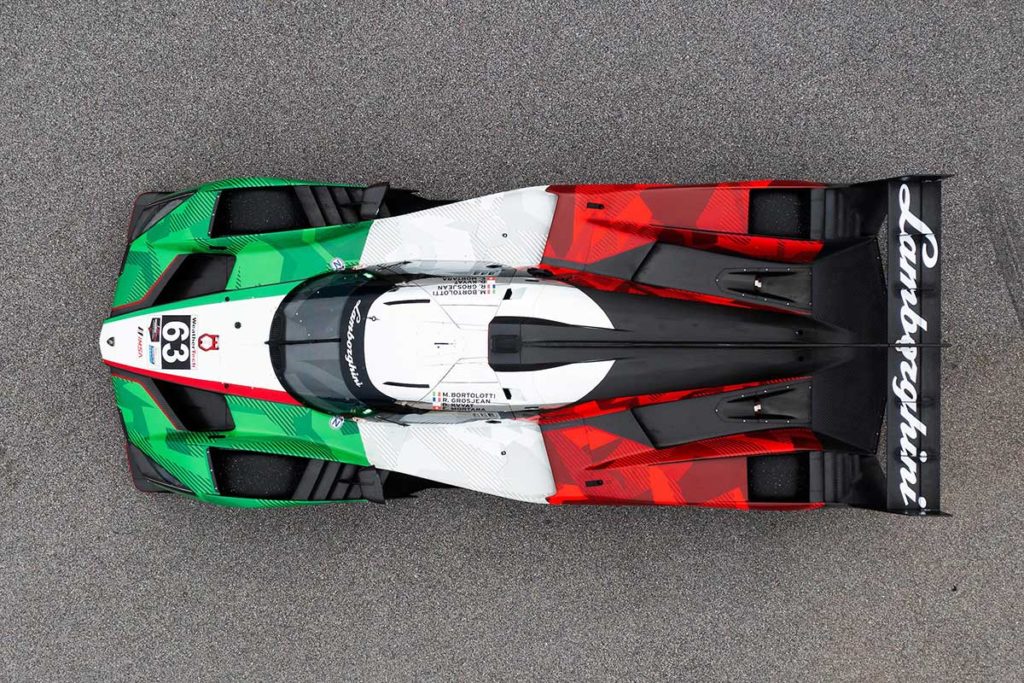
Thunderbolt in the world of endurance racing: Lamborghini has confirmed that there will be no SC63 on the grid in 2026. At a time when the Hypercar category has never been so dynamic, with the arrival of a number of major manufacturers, the Italian manufacturer is taking a step backwards. Behind the sober announcement lies a complex reality made up of strategic errors, technical challenges, risky choices and departures that precipitated the program's downfall. Here are the real reasons behind this premature abandonment.
A fragile technical program from the outset
Lamborghini has never been a major player in prototype competition. The SC63 program, unveiled in 2023, was supposed to propel the brand into the endurance elite, via the LMDh platform. But right from the start, the project ran up against a number of constraints: refusal from major chassis suppliers (Dallara, Oreca, Multimatic), default choice of Ligier. As for the engine, a reliable but heavy twin-turbo V8 developed with Autotecnica Motori (as for the Huracan GT3) weighed in the technical balance.
- Oreca: Acura, Alpine, Hyundai, Ford
- Dallara: BMW, Cadillac, Mclaren
- Mutimatic: Porsche
- Ligier: Lamborghini
Alliance then divorce with Iron Lynx
The real driving force behind the project was Iron Lynx. More than just a sporting partner, the team provided the financing. It enabled Lamborghini to claim a factory-built program, without having to bear the colossal costs of a WEC/IMSA season alone. We now know that the divorce with Iron Lynx, against a backdrop of mixed results and internal tensions, was fatal.
Mixed performances
Launched late in the competition (absence at Daytona 2024), the SC63 accumulated problems: crashes during development, parts delays, fluctuating mechanical reliability. In the WEC, the first season saw two retirements and a 10th-place finish in the best race. In IMSAThe best result was 7th place. Not a disgrace for a first year, but not enough to convince new partners.
WEC rule change, IMSA rescue attempt
By 2025, the WEC requires two cars per manufacturer. For Lamborghini, orphaned of its main partner, this means a doubling of the budget. An untenable prospect for a brand that doesn't want to bet everything on motorsport. The choice was quickly made: exit the WEC.
In 2025, Lamborghini returned to the IMSA Endurance Cup on its own. In the absence of Iron Lynx, it entrusts the operation to Riley Motorsports, for a fee. But with no convincing results and no serious partner for 2026, the axe fell. Lamborghini announces a "pause" in the IMSA GTP program. In motorsport parlance, this often means "the end of the project".
The car will contest two final races in 2025 (Indianapolis and Petit Le Mans), with a number of technical upgrades (notably to the rear suspension). The trio of Grosjean, Kvyat and Bortolotti will attempt to restore the car's reputation. But for them, the future lies elsewhere.
Lamborghini focuses on racing customers
The Sant'Agata firm refocuses its efforts on its solid foundations: GT3 and Super Trofeo. The new model Temerario GT3developed in-house, will drive the future of Lamborghini Motorsport. A more profitable, more controlled strategy, better aligned with its commercial ambitions.
Lamborghini is not the first to withdraw from a Hypercar program, but it is the first major manufacturer to do so. Behind this withdrawal lies a cocktail of misjudgment, financial dependence and underestimated technical realities. Rather than sink, the brand prefers to cut its losses short. A bitter choice, but strategically understandable.